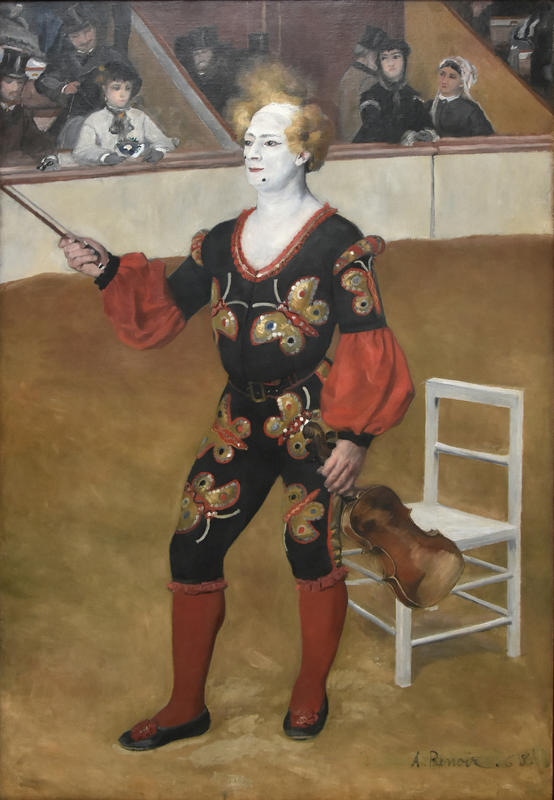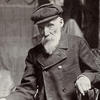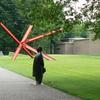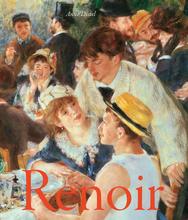More about The Clown
- All
- Info
- Shop

Sr. Contributor
For Pierre-Auguste Renoir, the circus was a source of income, entertainment, and the occasional muse.
In mid-nineteenth century Paris, the circus was the place to be. From May to October, flocks of Parisians crammed into the Cirque des Champs-Elysees to see the wonders it promised. As soon as the summer circus closed its ring, circus goers spiralled into withdrawal prompting the construction of the Cirque Napoléon, now known as the Cirque d’Hiver, where circus fanatics got their fix during the holiday season. The circus gave young minds the opportunity to escape the traditionalist demands of the bourgeoisie, and introduced them to a freer world filled with exotic animals, rowdy performances, and plenty of freaks.
Like his contemporaries, Renoir was hooked on the eccentric lifestyle of the circus. Known as a passionate ladies-man, it's very possible Renoir took one of his many muses to the Cirque Napoléon for date night. Just imagine acrobats in skin-tight leotards flying through the sky, men and women contorting their bodies in ways the average person can only dream of, and well-built men proving their masculinity by working with lions and tigers and bears. Oh my, the circus certainly was one steamy place! Being the smooth talker that he was, Renoir would have treated his lady to a post-show bite at the neighboring Cirque Napoléon Café where performers mingled with the public and the line between the circus and real life blurred. The owner of the cafe commissioned a piece by Renoir, hoping to use it as advertisement for the circus, and urged the artist to depict the great performer John Price who performed alongside his brother William at the Cirque Napoléon. One of the more famous acts of the Price brothers featured a staple talent of clowns - juggling. The Prices would pretend to be at a restaurant with John in drag to appear like an 1800s-approved heterosexual couple. The brothers would start tossing plates and glasses from the table with two waiters played by other family members and in minutes the restaurant scene turned into a frenzy of flying dinnerware and food. The Prices turned dinner and a show into dinner as the show, but kept it just civilized enough that it wasn’t a full on food fight.
However, John and William’s claim-to-fame was their musical act. The pair of brothers were the first ever “clowns musiciens” who added musical instruments and songs to their circus performance. With John on the violin and William on the flute, the clowns balanced on shaky chairs or crooked ladders while twisting and folding their bodies in unthinkable ways causing gasps and exclamations from the crowd.
Renoir’s The Clown depicts John Price as he is about to perform this musical act, and let me say that Price is ready to go. He is rocking his trademark butterfly outfit and has gone for the bold choice of having not one but two tâche de beauté that really stand out against his ghost-like foundation. Price’s posture is stern and professional, with a popped hip to prove he means business. His serious expression and pose are meant to contradict with his flamboyant costume and preposterous hair (talk about a bad hair day) to make his upcoming act even more comical. The audience members behind Price are frozen in a state of anticipation and intrigue that reflects our own fascination with the scene. Renoir leaves us all at the edge of our seats, filled with excitement for the show to begin.
Sources
- Cain, David. “Restaurant Jugglers.” Last modified December 6, 2014. https://www.juggle.org/restaurant-jugglers/.
- Coxe, Anthony Hippisley. “The Big Top: the modern circus, an international art.” The UNESCO Courier 41, no.1 (1988): 4-7.
- “Entrée Les Violons Sauteurs: John Price, clown musical.” L'Encyclopédie des arts du cirque. Accessed October 1, 2020. http://expositions.bnf.fr/cnac/grand/cir_2790.htm.
- “Histoire.” Cirque d’Hiver Bouglione. Accessed October 1, 2020. https://www.cirquedhiver.com/histoire/.
- Jellema-van Woelderen, E. “Renoir's 'Clown' in the Kröller Müller Museum.” Simiolus: Netherlands Quarterly for the History of Art 1, no. 1 (1966 - 1967): 46-50. Accessed October 1, 2020. https://www.jstor.org/stable/3780380.
- “Le clown musical.” Kröller-Müller Museum. Accessed October 1, 2020. https://krollermuller.nl/en/auguste-renoir-the-clown-1.
- Pelsers, Lisette. “Clown.” Last modified July, 2014. https://krollermuller.nl/en-clown.













This is definitely going to be my Halloween costume next year!